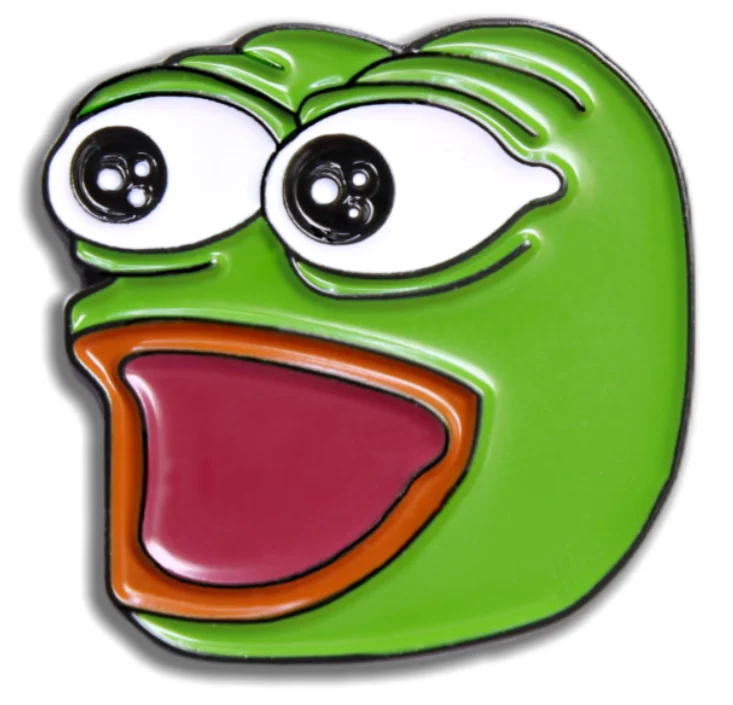Memes come and go in the fast-paced world of online culture, but a few leave a mark that transcends platforms and generations. One such phenomenon is the concept of “pogger face.” What started as an expression of excitement and hype in gaming communities has now become a varied and often humorous staple of internet slang. But where did it come from? And how is “pogger face” used today in the digital ecosystem? Let’s explore.
The Origin of “Pogger Face”
To truly understand “pogger face,” we need to revisit the origins of its predecessor, “PogChamp.” The PogChamp emote rose to fame on Twitch, where it depicted professional Street Fighter player Ryan “Gootecks” Gutierrez reacting with wide-eyed excitement. Debuting in 2010, PogChamp quickly became a universal symbol for surprise, excitement, or intense hype among gamers and stream viewers.
From this, “poggers” emerged as a term expressing similar emotions, eventually inspiring the visual and meme-worthy concept of “pogger face” to describe an exaggerated or highly animated expression of awe, excitement, or disbelief. Unlike the original PogChamp emote, “pogger face” is less about a specific emote or person and more about capturing a relatable online reaction.
The Evolution and Use of “Pogger Face”
Since its debut, “pogger face” has grown beyond its Twitch roots. It has established itself across multiple online communities, from social media platforms like Twitter and Reddit to meme subcultures and forums. Here’s how “pogger face” finds its place in the digital world today:
1. Meme Culture
“Pogger face” has become a staple in meme-making. Picture scenarios featuring comically exaggerated faces reacting to unbelievable events or victories, and you’ll spot the essence of “pogger face.” Memes often use the phrase humorously to describe reactions that are “so extra” they feel universally relatable.
2. Livestreaming and Gaming
On platforms like Twitch, YouTube Gaming, and Discord, “pogger face” lives on as a reaction GIF or often exaggerated real-life reactions from streamers. Content creators lean into dramatic facial expressions to connect with their audience, tapping into the joy that “poggers” moments bring to online gaming culture.
3. Social Media Reactions
Scrolling through Twitter or Instagram, you’ll often see “pogger face” used in captions alongside over-the-top pictures, GIFs, or videos. These posts rely on “pogger face” to amplify funny or celebratory moments, whether it’s announcing good news or creating relatable humor.
Controversies and Misunderstandings Around “Pogger Face”
Like any online cultural phenomenon, “pogger face” hasn’t escaped controversy. Most notably, its origins tied to the now-deleted PogChamp emote have drawn mixed reactions. Twitch banned the PogChamp emote in 2021 after Ryan Gutierrez posted tweets that Twitch said encouraged violence following political unrest at the U.S. Capitol. While Twitch worked swiftly to replace the original PogChamp emote, the situation raised questions about the influence that meme culture and its figureheads can wield online.
Due to these controversies, some users have distanced themselves from the term “poggers” or related references like “pogger face.” Others, however, have reclaimed and recontextualized it to reflect its original intent as a wholesome way to express excitement and connection within communities.
The Cultural Impact of “Pogger Face” Today
Despite the occasional wave of controversy, “pogger face” remains relevant in 2024. It has evolved into a cultural artifact for Gen Z and millennial audiences who grew up with internet humor and vibrant online spaces. Here’s why it continues to thrive:
- Universal Relatability
Whether you’re gaming, watching a surprising video, or hearing fantastic news, there’s something universally understood about the feeling behind a “pogger face.” The term connects people through shared emotional highs.
- Creative Opportunities
The visually amusing and exaggerated nature of “pogger face” lends itself to endless creative possibilities on digital platforms. It’s a playground for artists, meme creators, and content producers looking to tap into the zeitgeist of internet culture.
- Community Identity
For many, the idea of “pogger face” is intrinsically linked to the gaming and online communities they cherish. It serves as part of the unique language that reinforces their identity within these spaces.
Examples of “Pogger Face” in Action
- Memes: Think of classic images with captions like “When you get the last slice of pizza” accompanied by an exaggerated reaction image labeled “pogger face.”
- Streams: Streamers screaming in delight after a clutch victory in a competitive game, with their face perfectly captured as a “pogger face” moment.
- Social Media: A video of someone’s awe-struck reaction to a fireworks show going viral on Instagram, simply captioned, “That pogger face moment.”
Final Thoughts
“Pogger face” is more than a fleeting internet trend. It’s a living piece of online culture that continues to bring people together through humor, excitement, and shared expressions of joy. While controversies can sometimes complicate these cultural artifacts, “pogger face” demonstrates the internet’s resilience in adapting, evolving, and thriving.
If you love decoding internet culture or live for those “poggers” moments, keep an eye out for the new and creative ways “pogger face” will continue to shape memes and social media globally. After all, there’s always something to get hyped about online!








